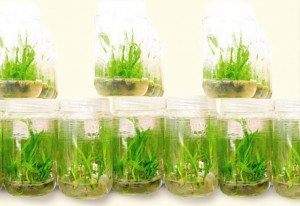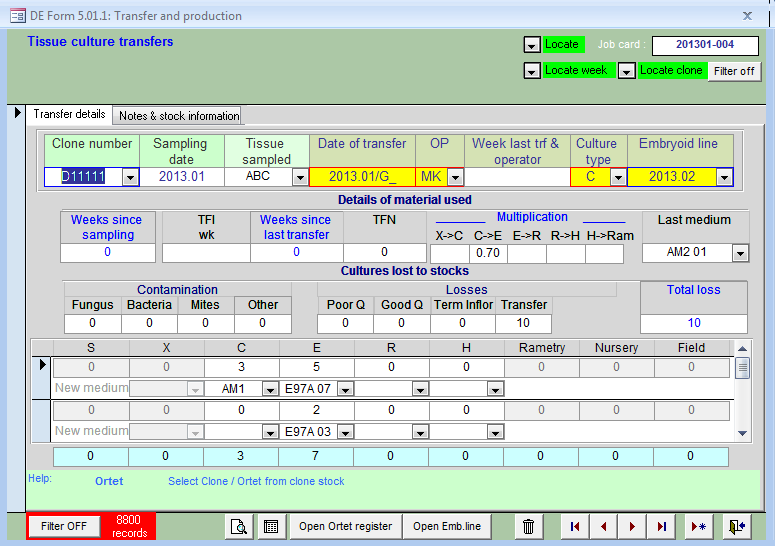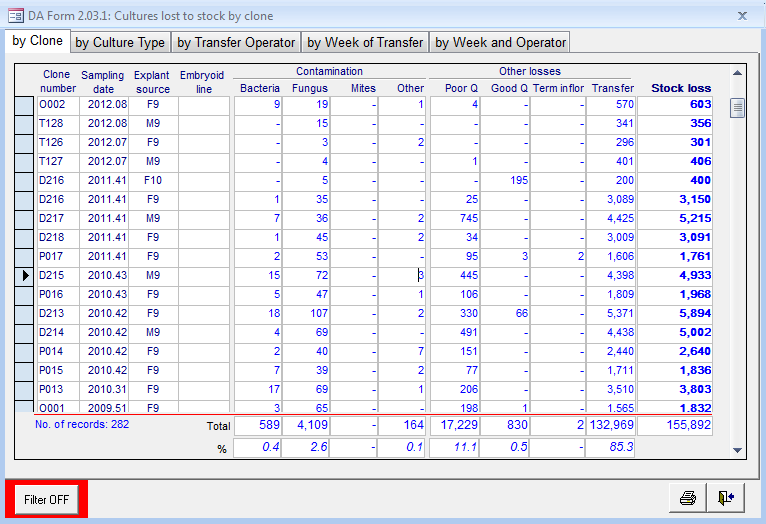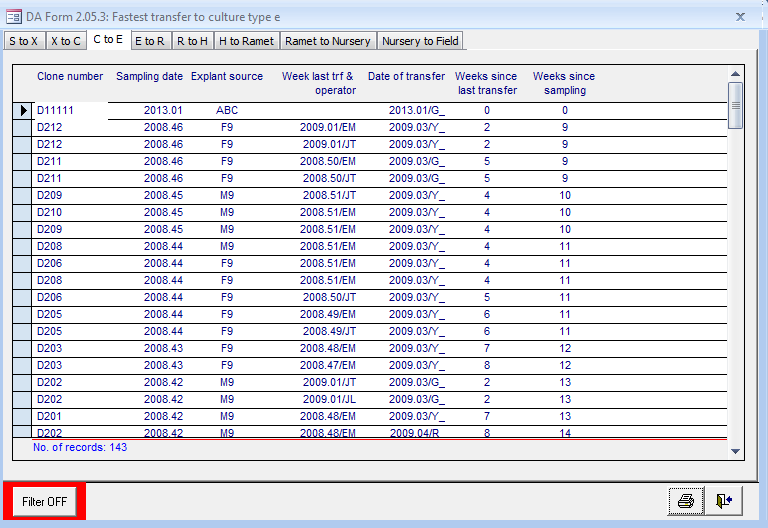Over the past decades, advances in modern cloning and tissue culture techniques have opened up the possibility of producing clonal oil palm planting material. While this process has been used successfully in various other crops, oil palm tissue culture programs have suffered from problems with terminal inflorescence and bunch failure. Putting aside these problems, the tissue culture approach does have advantages over traditional seed production in that the genetic make-up of the seedlings is at least in principle completely controllable. With much recent work being put into attempts to understand and correct the causes of the abnormal flowering phenomenon, oil palm tissue culture is sure to further gain in importance in the future.

Oil palm plantlets in a tissue culture laboratory
For the reasons outlined above, oil palm tissue culture laboratories typically carry out extensive experiments and trials with different tissue culture media and different chemical treatments. It is clear that a powerful database tool is required to store and analyze results of these experiments while at the same time running a commercial operation aiming to produce large numbers of seedlings in a specified time frame. OMP Tissue Culture is a specialized database application designed to meet exactly these needs of oil palm tissue culture managers and researchers.
Culture transfer recording with treatments and media
OMP Tissue Culture begins with the registration of samples and ortets and stores comprehensive information including the sampling date, the precise tree the sample was taken from and the tissue sampled. The samples are cut up, undergo chemical treatment and are placed in a tissue culture medium for further development. In the following, the samples undergo various development stages including explant, callus, embryoid, roots and shoots before they are transferred to the rametry, nursery and the field. The main focus of OMP Tissue Culture is complete capture of information relating to the tissue transfers from one stage to the next, including treatments applied and media used at each step. At each stage, losses due to contamination and quality control selection as well as multiplication rates are recorded. Job cards for transfers can be printed off for each operator.
Culture stock reporting and advanced data analysis
A selection of data analysis forms and reports allow tissue culture managers to view culture stocks in each stage of the development, grouped by clone number and sampling date or by the embryoid line identifier. OMP Tissue Culture also makes it possible to view the contamination and loss rates for each clone number, transfer operator or in total, giving managers a useful tool to evaluate which parts of the process require particular attention and could be improved. Other aspects covered by the OMP Tissue Culture data analysis module include fastest transfers between any of the stages as well as multiplication rates, which are both very important parameters for a commercial seedling production operation.



